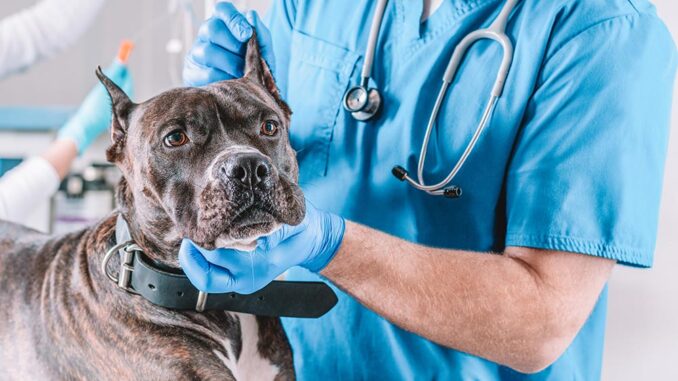
This article was updated on December 5th, 2023
If your dog has eaten something poisonous or dangerous, inducing vomiting can help but is not always the best course of action. This article provides information on how to induce vomiting at home without Hydrogen Peroxide, but also explains the risks involved and how to get the help you need.
I don’t have hydrogen peroxide: What are the alternatives for inducing vomiting in dogs?
Hydrogen peroxide has been a commonly recommended substance for inducing vomiting, but its use is now questioned due to potential risks.
First, contact your vet or nearest poison control centre and discuss the ingestion with them. If they advise that you induce vomiting, remember to make sure that your pet is fully conscious and able to swallow.
1. Pet Poison Helpline. US Phone: 1-855-764-7661
2. ASPCA Animal Poison Control Center. Phone: 1-888-426-4435
Note: If you are not based in the USA, your country should also have a poison center that you can contact.
3. Teleconsultations: A teleconsultation with a vet is another alternative to get help and guidance before you induce vomiting in your dog. These services offer teleconsultations: Vetster, TeleVet, PetPro Connect, Airvet, Fuzzy and WhiskerDocs.
Salt water can be used as an alternative to induce vomiting. Mix a tablespoon of salt in a small amount of water and dose this to your dog by mouth. This should induce vomiting in 2-3 minutes.
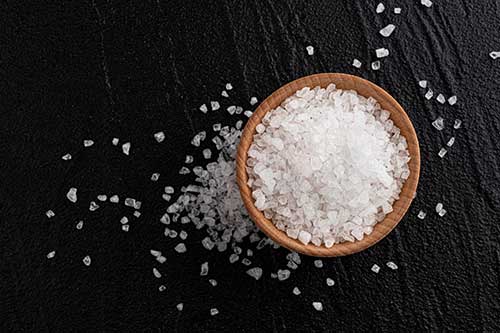
If the salt water doesn’t make them vomit, proceed to your nearest emergency centre immediately. Do not attempt to give them a second dose, as too much salt can also cause problems.
You can also try giving them some mustard, since the strong flavor may cause them to vomit. Do not try to stick your fingers into your dog’s mouth to make them gag. This is risky because they may bite you, and then you’ll need to visit the emergency room yourself.
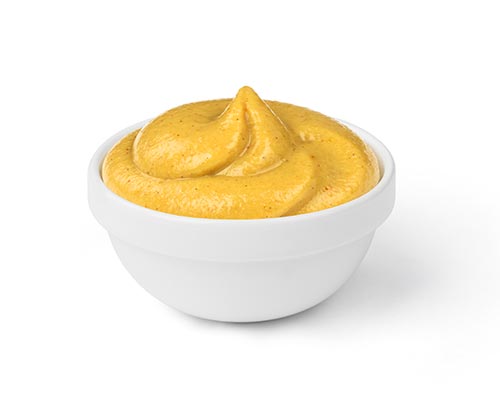
However, if vomiting is not advised by your veterinarian, activated charcoal is usually safe to give to your pet at home before you take them to an emergency centre. Remember that activated charcoal won’t necessarily prevent the consequences of eating a toxin, but it will decrease the absorption slightly and give you a bigger window of opportunity to get your dog to the vet.
Risks of inducing vomiting at home and why it’s not usually recommended
Inducing vomiting carries a variety of risks. It may worsen the problem, cause aspiration pneumonia, or damage the esophagus.
It should ONLY be done after speaking to a vet or poison centre.
Your dog needs to be fully conscious, not seizing, and able to swallow when you induce vomiting. Otherwise, you may cause deadly aspiration pneumonia.

If they have eaten something corrosive like pool acid or caustic soda, inducing vomiting may damage the throat and mouth and it is not recommended.
If they have eaten something sharp like a fishhook or needle, you should NOT induce vomiting.
Should I make my dog throw up?
If you are unsure and can’t call a pet poison helplinem read our article: should I make my dog throw up?
Tips to ensure your dog’s safety during and after the vomiting process
1. Consult a Professional: Reach out to a veterinarian or an emergency pet hotline before inducing vomiting to get personalized advice.
2. Appropriate Dosage: If advised to use activated charcoal or any other substance, follow the recommended dosage provided by a veterinarian.
3. Administer Safely: Administer substances carefully to avoid aspiration and choking. Keep your dog calm during the process.
4. Observe Closely: Monitor your dog during and after vomiting for any signs of distress, breathing difficulties, or abnormal behavior.
What happens if my dog vomits at home?
Inducing vomiting might be a temporary solution, but it does NOT replace a full veterinary evaluation and treatment. A vet visit is advised even if your pet is not showing any symptoms. Some toxins (e.g. rat poison) have a delayed onset of symptoms. But once the symptoms appear, it’s too late to treat the animal.
ALWAYS take your dog to the vet after they have ingested a toxic substance or a foreign body!
So even If your dog does vomit, you should still take them to your nearest emergency center for further treatment. Bring a photo of the vomit or a sample with you, as well as the packaging of the toxic substance (if applicable).
What are top reasons why dog owners may prefer not to use hydrogen peroxide to induce vomiting?
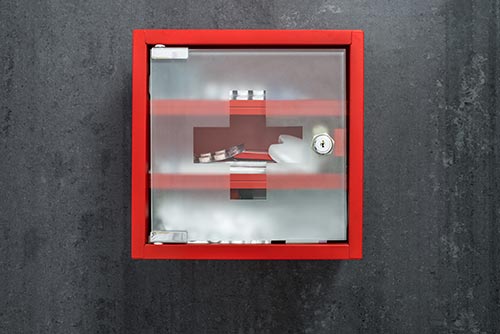
Hydrogen peroxide is a commonly debated method for inducing vomiting in dogs at home after ingesting potentially toxic substances. While it can be effective, there are reasons why some pet owners steer clear:
Exacerbation of Existing Health Conditions
Hydrogen peroxide can be harmful to pets if they have underlying conditions including lung problems, gastrointestinal issues, or heart conditions. Hydrogen peroxide can also react to other chemicals causing an unwanted reaction and it can damage tissues.
Harm to the Throat
The effervescence of hydrogen peroxide can cause irritation and damage to the throat, mouth, nose, sinuses, and esophagus during vomiting.
Harm to the Lungs
If your dog is not fully conscious they may inhale some of the hydrogen peroxide or vomit and this can cause a serious pneumonia.
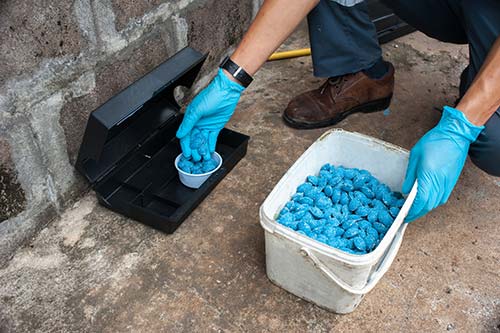
Inducing vomiting in dogs: Should I call my vet?
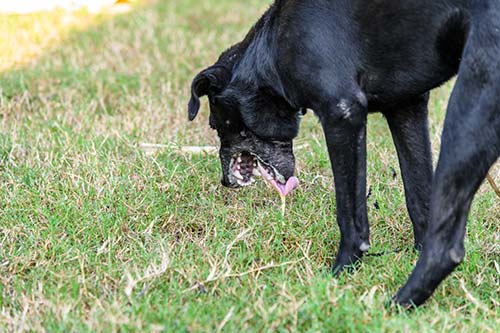
There is no doubt that inducing vomiting in dogs could be potentially lifesaving in some circumstances. But it is not without risk and should be avoided in other circumstances. It’s essential to get professional advice before inducing vomiting, especially if you suspect your dog has eaten some sort of toxin.
Your first point of contact is your local veterinarian. Explain to them what your dog has ingested, at what time they ingested the substance, and the amount that they ingested. They will then advise as to whether inducing vomiting is indicated.
Preparing for your vet visit or phone call
When you contact these resources, be prepared to provide the following information:
- Your dog’s breed, age, weight, and any pre-existing health conditions or medication that they take on a chronic basis.
- The name of the substance your pet ingested, including the brand name if applicable.
- The approximate amount ingested and the time of ingestion.
- Any symptoms your pet is currently experiencing.
These resources are staffed with professionals that are expert in various intoxications and ingestions of foreign bodies and they will be able to assist you with first aid measures for your pet. Teleconsultations do not replace a vet visit, but they may assist you in the initial stages and help to save your pet’s life by
Your vet is not available: when inducing vomiting in dogs may be necessary
Inducing vomiting in dogs is indicated in some cases if they have ingested a toxic or dangerous substance (including chocolate, grapes, xylitol, medications , poisons, or household products). The dog must have eaten the substance within the last two hours. If it was ingested more than two hours before, then inducing vomiting is unlikely to have any benefit.

Induction of vomiting is also useful for dogs that have eaten some sort of foreign body (e.g. cloth, toys, or balls), but this should only be done under veterinary supervision to prevent further complications. Learn more: should I make my dog throw up?
Conclusion
Timely induction of vomiting in dogs can be lifesaving but it should ONLY be done under guidance from a veterinarian or expert in poisons. There are several risks involved with the induction of vomiting, particularly with using hydrogen peroxide. A professional will help to weigh the risks against the benefits of inducing vomiting.
Your pet should ALWAYS be taken to the vet after they have eaten something toxic or foreign, even if they are not showing any symptoms to prevent further complications later.
Remember: preventing is better than curing. Keep all toxic substances and medications out of your pet’s reach.
Disclaimer: This website's content is not a substitute for veterinary care. Always consult with your veterinarian for healthcare decisions. Read More.


Be the first to comment